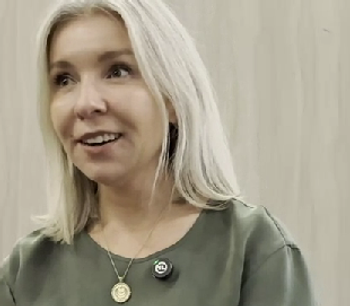
- Vol 32 No 12
- Volume 32
- Issue 12
Challenges of Transitioning From Pediatric to Adult-Oriented Care
Who is responsible for treating the adolescent and young adult with psychiatric issues -- and when and how should transitions in care occur?
Young adult psychiatry addresses the needs of transitional-age youth typically between the ages of 15 and 26 years. The phenomena of transitional age difficulties are a result of cultural and societal changes in which physiologic maturity (as marked by chronological age and biological development) and the acquisition of skills necessary for independent adult life in modern society are not aligned; this may be due to chronic illness in childhood, which is on the rise, or changes in parenting or other psychosocial difficulties. Society is confused about the roles and responsibilities of youth, as noted by Giedd:
Age-of-consent questions are particularly enmeshed in political and social contexts. For example, currently in the United States a person must be at least 15 to 17 years old . . . to drive, at least 18 to vote, buy cigarettes, or be in the military, and at least 21 to drink alcohol. The minimum age for holding political office varies . . . some municipalities allow mayors as young as 16 . . . , governors from 18 to 30. The age of consent to sexual relations varies worldwide from puberty . . . to age 18.1
The inverse situation is illustrated in the legal entity of emancipated minors, which recognizes certain youth as developmentally or functionally advanced beyond their chronological age of less than 18 years once they demonstrate certain adult competencies (eg, financial self-sufficiency, marriage, caretaking of children, military service).
[[{"type":"media","view_mode":"media_crop","fid":"44425","attributes":{"alt":"© Alex Tor/shutterstock.com","class":"media-image media-image-right","id":"media_crop_8283121832594","media_crop_h":"0","media_crop_image_style":"-1","media_crop_instance":"4965","media_crop_rotate":"0","media_crop_scale_h":"0","media_crop_scale_w":"0","media_crop_w":"0","media_crop_x":"0","media_crop_y":"0","style":"height: 94px; width: 150px; float: right;","title":"© Alex Tor/shutterstock.com","typeof":"foaf:Image"}}]]Young adulthood is a time of increased motivation, opportunity, and risk-taking, but also of increased risk for the onset of multiple, highly prevalent psychiatric disorders. Mood and anxiety disorders typically present during late adolescence and in the early twenties. There is a heightened risk of substance abuse disorders due to incompletely developed impulse control coupled with increased access to drugs. Eating disorders and the first break for early-onset psychosis also peak within this age range.
Disorders from childhood and adolescence, such as ADHD and autism spectrum disorders, continue to affect function, but at a higher degree that cannot be as easily accommodated by families and educational or therapeutic systems. Popular expressions such as “extended adolescence” or “failure to launch” focus concern on the individual’s deficits, but it is important to consider a developmental perspective that recognizes the challenges of the family and the clinical system in transitioning youth as well. So, who is responsible for treating the adolescent and young adult and when and how should transitions in care occur?
When to refer a young patient to an adult psychiatrist
Child and adolescent psychiatrists practice within a moving developmental frame and may work with adolescents and young adults as they enter adulthood for continuity of care. However, pediatric psychiatrists may choose to refer the patient to an adult psychiatrist for several reasons. The volume of emerging young adults would quickly saturate pediatric providers’ patient load. Educational or employment transitions can result in a geographic move that makes access to childhood providers difficult. Child and adolescent psychiatrists may treat multiple members of a family, and referral to another clinician may help separation and foster the patient’s individuation process.
When a patient is reluctant to transition to adult services, pediatric psychiatrists may recognize dynamics that resist change to the treatment configuration, such as avoidance due to anxiety about more independent functioning, leaving an established doctor-patient relationship, unacknowledged dependence on the family support that pediatric treatment providers offer, and reaction to an enactment of parental loss or abandonment. With support, the patient can be guided through the sense of loss and normal grief in such a transition. Thus, planning for the transition, on the part of the child psychiatrist as well as the receiving adult psychiatrist, requires forethought as much as a year before the actual transition if possible.
Issues in accepting transitioning patients
When adult providers begin to work with adolescents and young adults and their families who have transitioned from child psychiatry, reviewing confidentiality and setting treatment boundaries avoid confusion between the treatment models. Pediatric psychiatrists operate with a family-informed developmental model that may incorporate routine communication with parents to direct supportive changes in the home. Families may have the expectation that their child’s treating psychiatrist will freely release information. A review of confidentiality policies at the first meeting should outline how information (that will be more regulated in its release and with the child’s permission) will be exchanged by the adult psychiatrist with the family.
As children negotiate their own space apart from parents, there may be a greater need to establish clear boundaries. Information-gathering meetings with the family should be discussed beforehand with patients to define the level of disclosure and role of the session. Family sessions may also be balanced with separate meetings with significant others and families of choice, as this recognizes the importance of extra-familial relationships and invites other adult perspectives on a patient’s history.
Developmental discontinuity to adult functioning
There are several situations that can hinder a smooth segue to adult functioning. Young adulthood is a period when mood or psychotic disorders may first present, and it may be a difficult, clinically unstable period. For youths who have had periods of severe symptomatology, their caretakers may have provided too much accommodation out of a sense of overprotection, thereby enabling avoidance of challenges during adolescence. Consequently, these youths may not have had opportunities to develop skills to function autonomously, and they may stall from anxiety or regress when adult expectations are placed on them.
Alternately, if an adolescent received inadequate supervision, there may be hidden or minimized development of symptoms that worsened with disengagement from treatment. With the additional loss of parental support at 18, these youths fall off the treatment radar until nonadherence results in relapse. With decreased supervision, young adults may have increased access to settings where recreational drugs are available, just as they have also reached the legal age limit for the purchase of alcohol. Some vulnerable youth may have undertreated substance abuse or be self-treating mood and anxiety symptoms with substances, all of which can undermine appropriate adult coping.
Not every young person has mastered skills of independent functioning by the age of 18, so the transitional age range reflects the discontinuity that can appear between chronological age and developmental maturity. Some families (such as those with high-conflict divorces or another family member with chronic illness) may be dependent on the child’s presence or other benefits they bring to the household, and the family destabilizes when the adolescent attempts to functionally individuate or leave. The young adult experiences himself or herself as the cause of the family’s distress and delays transitioning in order to stabilize the family.
CASE VIGNETTE
J is a 17-year-old high-performing junior at a competitive high school when she presents for psychiatric care for acute MDD with suicidal ideation and prominent anxiety features, in the context of increasing academic demands, declining grades, new-onset self-injury, and social withdrawal. She requires 2 inpatient hospitalizations for recurrent suicidal ideation of jumping in front of the subway en route to school.
Her distress decreases as academic adjustments are discussed, antidepressant medication is initiated, and her parents agree to therapeutic support for her. However, she has difficulty stepping down to a partial hospitalization program as she finds family meetings hard to tolerate because of the high level of tension between her parents, and she is often absent from the program the day after family meetings. She engages in individual outpatient medication management and psychotherapy more easily but is nonverbal or angry during periodic family sessions. This is followed by worsening urges for self-injury and thoughts of self-denigration and punishment.
J is unable to return for her senior year in high school because of exacerbation of symptoms, and she ambivalently receives home instruction. She continues in outpatient treatment, but with no clear progress developmentally or educationally.
After several months, J discloses in therapy that there is longstanding, mutual physical domestic violence between her parents, and she is frequently drawn into the fights in her attempts to stop their conflicts. She is concerned about her mother’s apparent depression and her father’s dissociative reactions after fights.
It is identified that the mother’s strong positive transference to J’s individual therapist has been particularly helpful in opening up the parents to treatment, but this secret has never been revealed outside the home. J realizes her perfectionism and academic excellence had initially served to refocus her parents and reduced the number of fights at home in her early years, and now the onset of her MDD and academic failure serves the same purpose. She states that she is afraid to leave home for fear that without her presence and intervention, her parents could inadvertently disable or kill each other.
After a discussion with the entire family, child protective services is contacted and the report is filed with a concurrent request from the parents for voluntary home-based services. The parents also agree to begin couples’ therapy to address relationship dynamics that existed before J was born, and to start to consider individual treatment. This allows J to release some of the caretaking and sense of responsibility she has toward her parents. J chooses to pursue her senior year of high school at a therapeutic boarding school that offers support for her anxiety and depression symptoms, and she is able to consider applying to local colleges.
As J’s 18th birthday approaches, transition to adult care is discussed with her and her parents. Although J has a strong therapeutic alliance with her adolescent psychiatrist and psychotherapist who have worked with her since her first hospitalization, she expresses a desire to find treatment closer to her boarding school and to separate from those who are working collaboratively with her parents. She feels that her parents will continue to struggle with safety in their relationship; although she restricts communication, her mother continues to leave messages for J’s therapist.
Several options that accept J’s insurance are identified and discussed with her over several months. She chooses an adult mental health center that offers group therapy options and specialized treatment for trauma. She allows communication between her pediatric and new adult teams, but restricts communication with her parents despite their expressed preference. She successfully transitions to living in a dorm at a college within the state but outside of her hometown.
Setting up a therapeutic alliance
Because adolescents and young adults have experience with pediatric providers who use a range of developmental approaches and may be family focused, transition-age patients are usually more comfortable with a practical, emotionally “real” therapeutic engagement with adult therapists. Changes in continuity of care are always challenging. When providing care to transitional patients, consider selective, therapeutically appropriate emotional disclosure during initial sessions to convey your concern, worry, or interest to foster the patient’s engagement and trust.
Building a quick alliance by joining a rejecting stance toward the family of origin is equivalent to building on sand, because this serves to externalize blame and erodes opportunities for reflection and practicing mature responsibility. This also sets up a framework for the projection of blame onto other responsible adults in the young adult’s life, such as bosses, teachers, and friends, which may later extend to the new therapist.
If families are too easily blamed for mistakes that the young adult makes, it impedes the patient from being motivated to problem-solve and may later emotionally block the patient from reaching out to his family when the family can be a supportive resource. A more balanced stance toward the family as a resource-available but separate from the patient-is less likely to result in scapegoating and emotional isolation. Recognize the practical support that families provide to young adults (financial, educational, access to health care, cultural, interpersonal) rather than discard access to these resources, while balancing appropriate boundaries to allow room for individuation.
Assume that young adult patients have not yet mastered independent living skills or achieved functional autonomy, although they may present themselves as doing so. Ask for examples of functioning, and listen for feedback from peers and family members to assess the actual level of independence. Colluding with a young adult’s self-idealization will create a therapeutic dilemma when the patient must acknowledge that he is in trouble. The patient may instead present with a series of crises or perceived victimizations over time due to repeated losses of jobs, housing, and relationships due to unperceived skills deficits.
Make an opportunity early in treatment to hear concerns from the family, and then openly review these concerns with the patient with therapeutic curiosity in a separate session. Note the specific language that is used by families to describe the patient’s historical roles or symptoms, because these labels and stories will be a window into the patient’s view of himself.
Managing confidential information and records
The ability to control access to confidential medical information comes with legal adult status. Youths may not be aware of how their treatment information was released or managed in the past, so a careful review of this history with parents can avoid unpleasant surprises. Young adults may need to be encouraged to allow transfer of medical files and records from pediatric services, and guided through the decision to release information to work or educational settings for appropriate support. Some patients benefit from receiving a hard copy of their records followed by a review with a clinician; this will enable patients to answer questions about their treatment and learn how to provide a medical and psychiatric history.
Spend some time reviewing who should receive updates on treatment, and ask the patient to sign appropriate release forms in sessions without the presence of parents to minimize pressure on the patient to release information. Proactively addressing the change in communication with the parents will avoid conflicts that can later arise from perceived rejection or estrangement. Review with family members that providers may receive unrestricted information from the outside, but are limited by confidentiality to release information, so that the parents understand that sharing their concerns with providers continues to be a valuable way to support their child.
Medication considerations
Young adults beginning treatment with new adult providers benefit from a thorough review of their medication. They may have assumed independent management of their medication administration and can benefit from a simplified regimen if possible to maximize adherence. It is common for young adults to express a desire to discontinue medications taken since childhood. This may stem from differing views on pathology, a symbolic pushing away of parental labels, or a desire to distance themselves from their illness history. To avoid nonadherence, it is appropriate to redo the informed consent process and review indications for each medication, which will remind the patient of how the medication can help him in functioning and reaching goals. Risks and benefits of each medication should be presented to the patient, because the effects and adverse effects that his parents agreed to in the past may no longer be acceptable. Closely screen for the patient’s current level of substance use, which may have changed with decreased supervision, for the possible impact on regimen adherence, medication levels, and treatment effectiveness.
Special transitioning situations
Patients who have both psychiatric and medical illnesses, particularly young adults with chronic illness (autism spectrum disorder, HIV infection, diabetes) or severe or terminal illnesses (which may require timely review of end-of-life planning), may require additional supports. Maintenance of health in young adults with chronic illnesses strongly depends on a smooth transition to adult care.2
Although experiencing the loss of a caring doctor-patient relationship is difficult, providers reluctant to transfer care after long-term work may need to assess their own countertransference. Consider transitioning in a graduated stepwise manner, or plan a multidisciplinary meeting and structured communication between pediatric and adult services; consider including parents, especially if the parents are divorced and there is considerable animosity. The Table provides suggestions for making the transition easier.
Young adults who are transitioning out of foster care, state custody, or probation placement must master adult skills without the normal scaffolding of family support and may also require additional meetings with agency providers. The presence of a developmental delay or intellectual or other permanent disabilities presents additional challenges. Services may be divided into separate treatment tunnels (eg, school services, employment support, family treatment, therapeutic services) and require extra communication to transition services.
Disclosures:
Dr Yoon is an Assistant Attending Psychiatrist at the New York Presbyterian Hospital and an Assistant Professor of Psychiatry in the Division of Child and Adolescent Psychiatry at Weill Cornell Medical College in New York. Dr Pao is Clinical Professor in the Department of Psychiatry at the Georgetown University School of Medicine and Clinical Director of the National Institute of Mental Health, National Institutes of Health, in Bethesda, MD.
References:
1. Giedd J. Adolescent brain maturation. Encyclopedia on Early Childhood Development. November 2010.
2. Turkel S, Pao M. Late consequences of pediatric chronic illness. Psychiatr Clin North Am. 2007;30: 819-835.
Additional Resources
• AACAP’s Youth in Transition: Moving into Adulthood Resource Center:
• National Alliance on Mental Illness (NAMI) Teens & Young Adults Section
• Got Transition by the nonprofit Center for Health Care
• National Collaborative on Workforce & Disability for Youth (NCWD-Youth)
Articles in this issue
about 10 years ago
Introduction: A Demographic With a Challenging Set of Problemsabout 10 years ago
Working Within a Campus Health Service: A Challenge With Many Rewardsabout 10 years ago
Still Practicingabout 10 years ago
Cranial Electrotherapy Stimulation for Bipolar Depression: New Dataabout 10 years ago
Physician Health and Professional Secrecyabout 10 years ago
Psychiatric Care of Peripartum Womenabout 10 years ago
No News Is Not Good Newsabout 10 years ago
The Evil HoursNewsletter
Receive trusted psychiatric news, expert analysis, and clinical insights — subscribe today to support your practice and your patients.

















